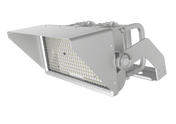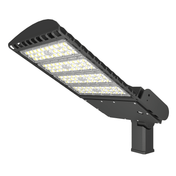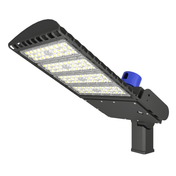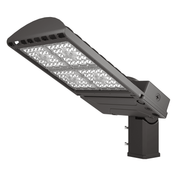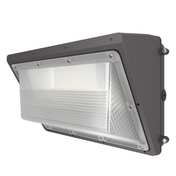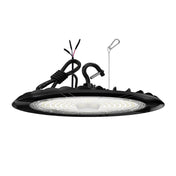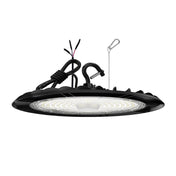Introduction
Whether you’re lighting a commercial parking lot, a residential backyard, or an industrial warehouse, LED area lights have become the go-to solution for modern spaces. Traditional area lighting—like halogen, fluorescent, or high-pressure sodium (HPS) fixtures—falls short: they waste energy, burn out fast, and fail to meet the demands of busy areas (think: dim parking lots or unevenly lit warehouses). LED area lights fix these pain points: they cut electricity bills by 50-70%, last 5-10 times longer, and deliver consistent, adjustable brightness. In this guide, we’ll break down everything you need to know about LED area lights—from why they’re better than traditional options to how to install them, calculate costs, and choose the perfect fixture for your space.
1. Why LED Area Lights Beat Traditional Lighting (Data-Backed Comparison)
To understand the value of LED area lights, let’s compare them to the most common traditional options. The numbers speak for themselves:
| Feature | LED Area Lights | Halogen Lights | HPS Lights | Fluorescent Lights |
|---|---|---|---|---|
| Energy Efficiency | 50-150 lumens per watt | 15-25 lumens per watt | 40-60 lumens per watt | 40-80 lumens per watt |
| Lifespan | 50,000-100,000 hours (5-10 yrs) | 1,000-2,000 hours (1-2 yrs) | 10,000-20,000 hours (2-4 yrs) | 8,000-15,000 hours (1-3 yrs) |
| Heat Output | Low (minimal wasted energy) | High (60% energy lost as heat) | High (50% energy lost as heat) | Moderate (30% energy lost) |
| Maintenance Costs | $5-$10/year (bulb replacement) | $50-$80/year | $30-$50/year | $25-$40/year |
| Environmental Impact | No toxic materials, 100% recyclable | Contains no toxic materials | Contains mercury | Contains mercury |
Key Takeaways from the Comparison:
- Energy Savings: A 100W LED area light produces the same brightness as a 250W HPS light—cutting energy use by 60%. For a commercial parking lot with 20 fixtures, that’s ~$1,200 in annual electricity savings (based on $0.15/kWh).
- Less Maintenance: LED fixtures rarely need bulb replacements. A warehouse using 50 LED area lights would save 50+ hours of labor per year (vs. replacing halogen bulbs every 6-12 months).
- Safer Operation: LEDs produce little heat, reducing fire risks (critical for spaces with flammable materials, like storage warehouses).
2. Core Benefits of LED Area Lights (Beyond Energy Savings)
Energy efficiency is just the start—LED area lights offer unique features that make them ideal for diverse spaces:
2.1 Adjustable Brightness & Smart Controls
Most modern LED area lights work with smart systems (like IoT or motion sensors) to adapt to your needs:
- Motion Activation: Dim to 30% when no one’s around, then brighten to 100% when a car/pedestrian passes (perfect for parking lots or backyard patios—saves an extra 20-30% on energy).
- Timer Settings: Set lights to turn on at dusk and off at dawn (no more forgetting to flip switches—great for residential yards).
- Remote Monitoring: Check light status or adjust brightness from your phone (ideal for business owners managing multiple locations, like a chain of retail stores).
2.2 Durability for Outdoor & Industrial Use
LED area lights are built to handle harsh conditions—critical for outdoor spaces (parking lots, parks) or industrial environments (factories, warehouses):
- Weather Resistance: Most have an IP65 or IP67 rating (IP65 = dust-tight + resistant to low-pressure water; IP67 = dust-tight + can withstand temporary submersion). This means they work in rain, snow, or dust storms.
- Impact Resistance: Aluminum or polycarbonate housings resist dents and cracks (unlike glass-covered halogen lights, which shatter easily).
2.3 Better Light Quality for Safety & Comfort
LEDs produce consistent, natural light that improves visibility and reduces eye strain:
- Color Temperature Options: Choose warm white (2700K-3000K) for cozy spaces (backyards, outdoor cafes) or cool white (4000K-6500K) for high-visibility areas (parking lots, warehouses).
- Uniform Coverage: LEDs distribute light evenly, avoiding dark spots (a common issue with HPS lights, which cast uneven “hot spots”).
3. Best Uses for LED Area Lights (Scene-by-Scene Guide)
LED area lights aren’t one-size-fits-all—different spaces need different fixtures. Here’s how to match them to your use case:
3.1 Commercial Parking Lots
Needs: High brightness (10,000-20,000 lumens), wide coverage, motion sensors.
Recommended LED Fixture: 100W-150W flood-style LED area lights (IP67 rating) with a 120° beam angle (covers 500-800 sq. ft. per fixture).
Recommended LED Fixture: 100W-150W flood-style LED area lights (IP67 rating) with a 120° beam angle (covers 500-800 sq. ft. per fixture).
Example: A 10,000 sq. ft. parking lot needs ~15-20 fixtures—saving $1,800/year vs. HPS lights.
3.2 Residential Yards & Patios
Needs: Low to moderate brightness (1,000-5,000 lumens), aesthetic design, warm color temperature.
Recommended LED Fixture: 10W-50W wall-mounted or pole-mounted LED area lights (IP65 rating) with 2700K-3000K color temperature.
Pro Tip: Add solar-powered LED area lights for off-grid spots (like a backyard garden) to avoid wiring costs.
3.3 Industrial Warehouses & Factories
Needs: Ultra-bright (20,000-50,000 lumens), dust/water resistance, high ceiling compatibility.
Recommended LED Fixture: 200W-400W high-bay LED area lights (IP67 rating) with a narrow 60° beam angle (cuts through tall ceilings to 照亮 floors evenly).
Benefit: LEDs reduce eye strain for workers—boosting productivity by 10-15% (per a 2023 industrial lighting study).
3.4 Outdoor Parks & Recreational Areas
Needs: Moderate brightness (5,000-10,000 lumens), dark-sky friendly (reduces light pollution), durable.
Recommended LED Fixture: 50W-100W LED area lights with a “dark-sky” certification (directs light downward, not upward) and an IP66 rating.
4. How to Install LED Area Lights: Step-by-Step Guide (Safe & Easy)
Installing LED area lights is simpler than you think—just follow these steps (always hire a licensed electrician if you’re not comfortable with wiring):
4.1 1. Assess Your Space
First, gather key details to pick the right installation setup:
- Mounting Type: Will you use a pole, wall, or ceiling mount? (Poles = parking lots; walls = patios; ceilings = warehouses.)
- Power Source: Check voltage (120V/240V for grid power) or choose solar if there’s no nearby outlet.
- Coverage Area: Calculate how many fixtures you need (use a “lumens calculator” online—input your space size and desired brightness).
4.2 2. Gather Tools & Materials
You’ll need:
- LED area light fixture
- Mounting bracket (included with most fixtures)
- Screwdriver, drill, and wire strippers
- Electrical tape and wire nuts
- Ladder or lift (for high mounts, like warehouse ceilings)
4.3 3. Install the Fixture
- Turn Off Power: Locate the circuit breaker for the area and flip it off (test with a voltage tester to be safe).
- Mount the Bracket: Attach the bracket to the pole/wall/ceiling using screws (use concrete anchors for outdoor poles to prevent tipping).
- Wire the Fixture: Connect the LED’s wires to the power source (match black to black, white to white, and green to ground). Secure with wire nuts and wrap in electrical tape.
- Attach the Fixture: Screw the LED area light onto the bracket (tighten firmly to resist wind).
- Test the Light: Turn the power back on and check brightness, dimming, or motion sensors (adjust settings as needed).
5. LED Area Lights Cost Analysis: Are They Worth the Investment?
LED area lights have a higher upfront cost than traditional options—but the long-term savings make them a no-brainer. Let’s break down the numbers for a 10-fixture commercial parking lot:
| Type: LED | LED Area Lights | HPS Lights | 5-Year Savings with LED |
|---|---|---|---|
| Upfront Cost (Fixtures) | $1,500-$2,000 (10x $150-$200) | $800-$1,200 (10x $80-$120) | -$700 to -$800 |
| Installation | $500-$800 (10x $50-$80) | $500-$800 (same as LED) | $0 |
| Annual Electricity | $300-$450 (10x 100W x $0.15/kWh x 24hrs x 365) | $750-$1,125 (10x 250W x $0.15/kWh x 24hrs x 365) | $450-$675/year |
| Annual Maintenance | $50-$100 (bulb replacements) | $300-$500 (bulb replacements) | $250-$400/year |
Key Takeaway:
The upfront cost of LEDs is offset in 1-2 years. After 5 years, you’ll save $3,000-$5,375—and LEDs will still last another 5+ years (while HPS lights would need to be replaced twice).
6. How to Choose the Best LED Area Light (Avoid Common Mistakes)
Not all LED area lights are equal—use these tips to pick a high-quality fixture:
6.1 1. Focus on Lumens, Not Watts
Watts measure energy use; lumens measure brightness. Don’t buy a 200W LED just because it’s “powerful”—instead, choose lumens based on your space:
- Backyard: 1,000-5,000 lumens
- Parking lot: 10,000-20,000 lumens
- Warehouse: 20,000-50,000 lumens
6.2 2. Check the IP Rating
For outdoor use (parking lots, parks), choose IP65 or higher (IP67 is best for heavy rain or dust). Indoor spaces (warehouses) can use IP44 (dust-resistant).
6.3 3. Look for Certifications
Choose fixtures with DLC (DesignLights Consortium) or ENERGY STAR 认证 —these ensure energy efficiency and quality. Avoid uncertified “cheap LEDs” (they often burn out in 1-2 years).
6.4 4. Consider Warranty Length
A good LED area light comes with a 5-10 year warranty (vs. 1-2 years for low-quality models). A long warranty means the manufacturer trusts their product.
7. Common FAQs About LED Area Lights
Q1: Can I replace my old HPS/halogen area lights with LEDs?
Yes! Most LED area lights are “retrofit-friendly”—they fit standard mounting brackets. Just confirm voltage compatibility (120V/240V) and weight (LEDs are lighter than HPS, so no need to reinforce poles).
Q2: Do LED area lights work in cold weather?
Absolutely. LEDs operate reliably in temperatures as low as -40°F (-40°C)—better than HPS lights, which dim in freezing weather.
Q3: How long do LED area light bulbs last?
Most LED bulbs last 50,000-100,000 hours—so if you use the light 8 hours a day, it will last 17-34 years. You’ll rarely need to replace them!
Conclusion
LED area lights are the smart, cost-effective choice for any space—from residential backyards to busy commercial parking lots. They save energy, reduce maintenance, and improve safety—all while lasting decades. Whether you’re upgrading old fixtures or building a new space, the key is to match the LED to your needs: focus on lumens, IP rating, and certifications, and calculate long-term savings (not just upfront cost).
Ready to make the switch? Start small: Install 1-2 LED area lights in a high-use spot (like your backyard or a single parking lot bay) to test brightness and savings. Once you see the difference, scaling up will be easy.


